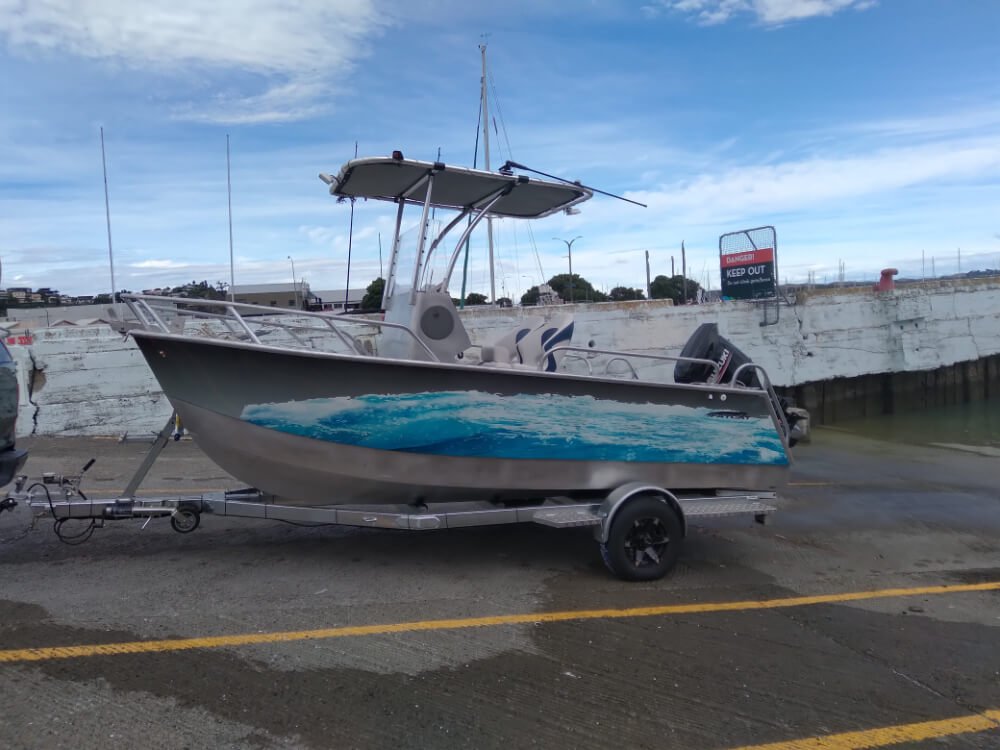The first all aluminium FatCat 5000 is in the water and currently undergoing sea trials in Napier.
With the uniqueness of the FatCat 4000, The FatCat team has received plenty of feedback and interest from worldwide. One of the things that came back repeatedly was if and when a more extended version would be available. Something that captured the essence of the 4000 with its space, safety features and stability, but at a size to allow for more passengers and give more capability offshore.

In response, FatCat is getting set to release a 5m version. Called the FatCat 5000, the first boat is in the water and currently undergoing sea trials. Following trials, production will begin with many set to roll off the production line in time for the coming summer.
One of the significant differences in the FatCat 5000 will be fabricated from aluminium rather than rotomoulded in polyethylene, as the FatCat 4000 is. Managing Director Blair McLay explains, “Rotomoulded polymers like polyethylene have many advantages in small boats, but there are some limitations as boat sizes increase. Essentially the loads increase dramatically with length, and although very strong, Polyethene is not as stiff as aluminium or fibreglass. In small boats, this is fine because polyethylene is a third of the weight of something like aluminium, so you can add thickness to give adequate stiffness without a weight penalty.
“However, as sizes and loads increase, you don’t get the corresponding percentage gains in stiffness from simply making the hull skins thicker and end up simply adding weight. For this larger boat, and the market it’s designed for, we feel aluminium is the best material, so are setting up for this design (and any larger models also) to be built from it.”

The first FatCat 5000 is powered by a 140hp Suzuki. Although at the upper limit for the design, it is perfect for pushing the boundaries during testing. The team has reported the boat is performing very well on initial trials. The hull shape gives a very smooth ride, with solid cornering and excellent performance in all wave directions. Being a catamaran, it is incredibly stable and offers exceptional space at rest.
FatCats have a unique hull shape, and despite the hundreds of hours in design, the team is always keen to prove any new model at full scale. McLay continues, “As with the 4000, our process is to build a prototype, test it fully before releasing it to the wider market. It makes the development time longer but allows us to make any necessary changes before we invest in the tooling required for production and gives customers a lot more confidence.”
The FatCat team are keen to keep any interested people in the loop as testing continues and production begins. A quick note to info@lightningmarine.co.nz will keep you up with the latest developments.



